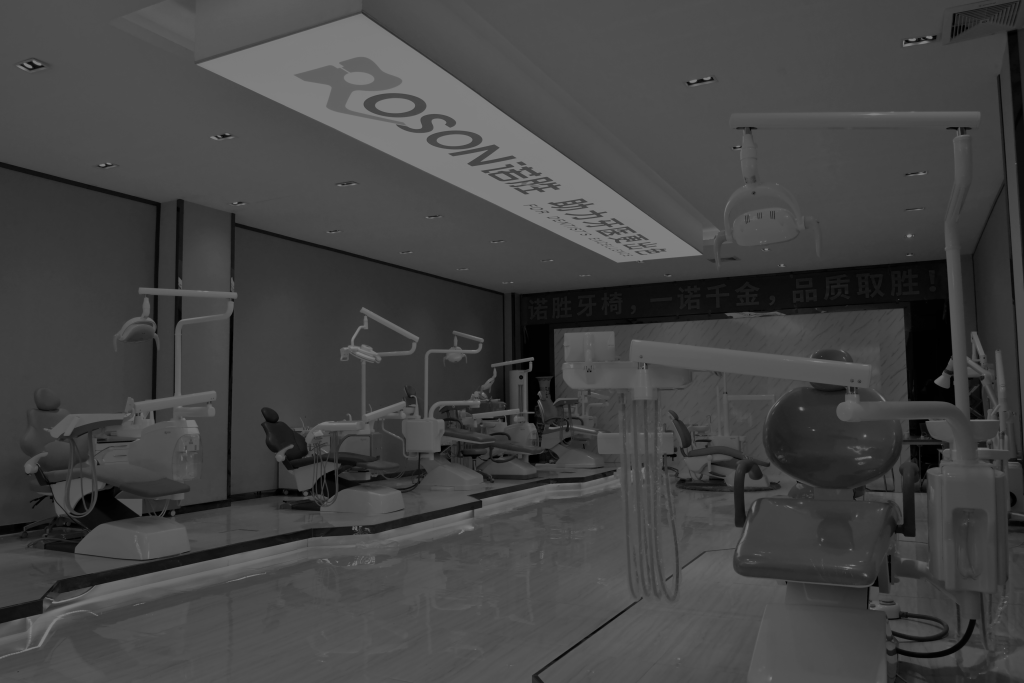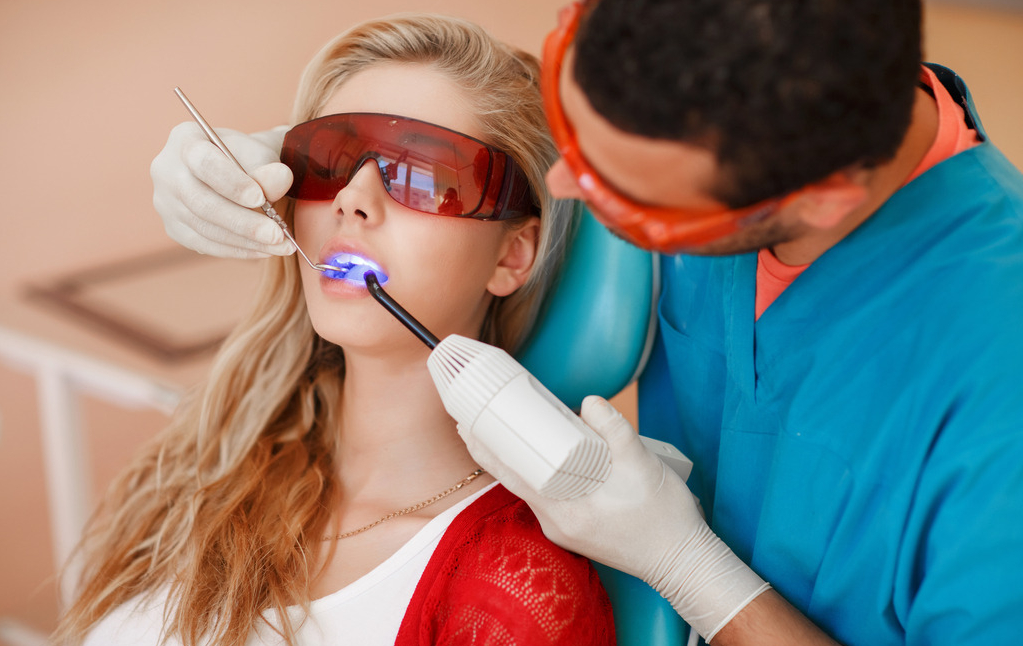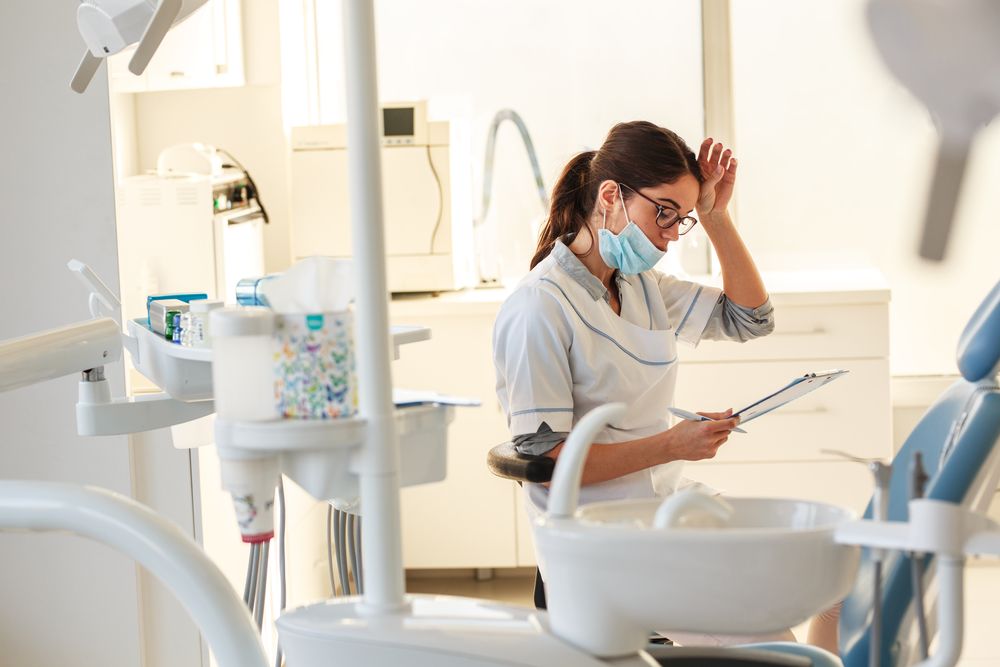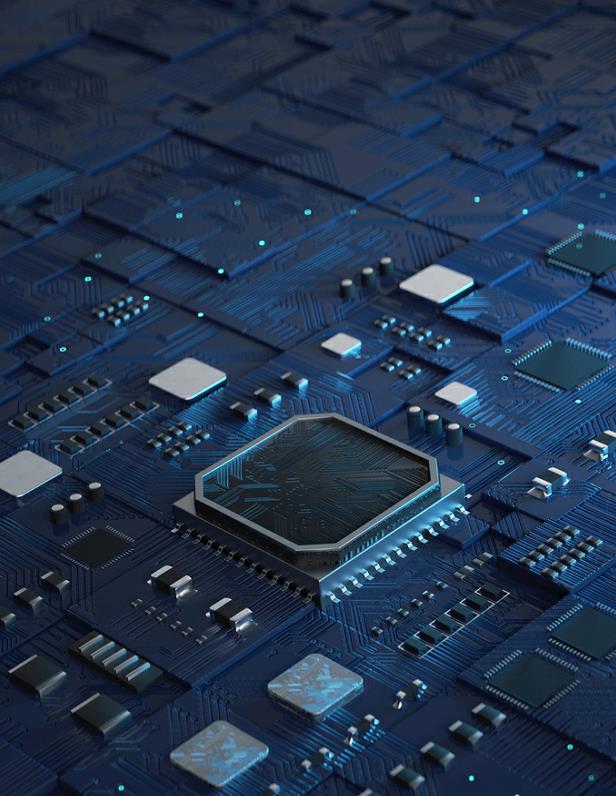How much do you know about dentistry
Good dental health is essential for overall health . However, many people neglect their oral health, which can lead to a variety of problems such as cavities, gum disease, and tooth loss. According to the World Health Organization, oral diseases affect nearly 3.5 billion people worldwide, highlighting the need for better dental hygiene and preventative care. Now, we can explore the dental health and Dental industry and provide some tips for maintaining healthy teeth and gums.
Here are some relevant content articles about the dental industry,maybe you can learn more about them.
1.The connection between oral health and the dental Practice
2.The history of dental chairs From primitive contraptions to modern-day marvels
3.How technology is revolutionizing the dental chair industry
4.Take you to the development of dental chair
5. Who Invented The First Dental Chair?
6.The perfect dental chair with a reliable Worry-Free Water system
7.A Guide to Choosing the Best Dental Handpieces for Your Practice
8. The electrolytic oxidized disinfection system
9.When The Dental Chair Is In The Supine Position
10.What makes a good dental chair factorys
11.The dental unit’s technologies and innovations
12. Factors to be considered when choosing a dental chair
13.How to Help Dentists Stay Ahead
14.How to develop a great dental unit
Roson dental unit
- KLT-6220 A3:Roson Flagship model
- KLT-6220 S9:Ffordable Luxury
- KLT-6220 A3L:Modern Fashion
- KLT-6220 S6:Disinfection
- KLT-6220 S6:Premium choose
- KLT-6210 S3:Popular style
- KLT-6210 N2+:Hight Performance
- KLT-6210 N1:Classic One
- KLT-6210 M1:Economical
Know more about us and dental products.

-
2005 Founded in Foshan
-
2006 Certification of ISO9001/CE
-
2010 New Plant 10,000M2
-
2011 President Unit of Dental Instruments Association of Foshan
-
2013 Certification of Famous Brand in Guangdong
-
2016 Certification of National High-Tech Enterprise
-
2021 8,000 sets of dental chair with world-wide sales network
-
2022 Flagship model A3 grand launch
-
2023 Please look forward to...
Common dental problems include cavities, gum disease, cavities and bad breath.
Here’s a brief description of each problem, as well as prevention and treatment recommendations:
Cavities (Tooth Decay): Cavities are formed when bacteria on the surface of teeth produce acid that damages the tooth tissue. Preventive measures for cavities include: brushing twice a day with fluoride toothpaste, reducing sugar intake in food and drinks, and regular dental checkups.
Gum Disease: Gum disease is caused by bacterial infection around the gums, with symptoms such as bleeding, swelling, pain and loose teeth. Preventive measures for gum disease include: brushing twice a day, using dental floss or interdental brushes to clean the areas between teeth, avoiding smoking and tobacco use, and regular dental checkups.
Bad breath: Bad breath is usually caused by bacteria in the mouth breaking down food residues or dead cells, or it could be due to other health problems. Preventive measures for bad breath include: brushing twice a day, using fluoride toothpaste, using dental floss or interdental brushes to clean the areas between teeth, regular dental checkups, daily mouthwash use, and maintaining adequate water intake.
Tooth Sensitivity: Tooth sensitivity occurs when the layer of dentin beneath the tooth enamel is exposed. This can be caused by gum recession, teeth grinding, or acidic foods and drinks. Preventive measures for tooth sensitivity include: using a soft-bristled toothbrush, using fluoride toothpaste designed for sensitive teeth, avoiding acidic foods and drinks, and regular dental checkups.
In summary, regular brushing, use of fluoride toothpaste, using dental floss or interdental brushes to clean the areas between teeth, reducing sugar intake in food and drinks, and regular dental checkups can help prevent and manage these common dental problems.
Some of the most common types of dental treatments include:
There are many different types of dental treatments, ranging from routine preventative care to more specialized procedures to address specific dental issues.
Dental Cleanings: Regular cleanings help to remove plaque and tartar buildup, preventing tooth decay and gum disease.
Fillings: Fillings are used to repair teeth that have been damaged by cavities or decay.
Root Canals: Root canals are used to treat infected or damaged tooth pulp.
Crowns: Crowns are used to cover and protect damaged teeth, restoring their appearance and function.
Bridges: Bridges are used to replace missing teeth, often using adjacent teeth as support.
Implants: Implants are artificial tooth roots that are surgically placed in the jawbone to support a replacement tooth or bridge.
Orthodontics: Orthodontic treatments, such as braces or clear aligners, are used to straighten teeth and correct bite issues.
Oral Surgery: Oral surgery may be required to remove impacted teeth, repair jaw damage, or treat oral cancer.
Cosmetic Dentistry: Cosmetic treatments, such as teeth whitening or veneers, are used to improve the appearance of teeth.

Diet can have a significant impact on dental health.
Here are some ways that diet can affect your teeth and gums:
Tooth Decay: Consuming sugary or acidic foods and drinks can increase the risk of tooth decay. The bacteria in our mouths feed on sugars and produce acid that can erode tooth enamel and cause cavities.
Gum Disease: A diet that lacks essential nutrients, such as vitamin C and calcium, can weaken your immune system and increase your risk of developing gum disease. Additionally, consuming high levels of sugary or starchy foods can lead to plaque buildup, which can cause inflammation and gum disease.
Enamel Erosion: Consuming acidic foods and drinks, such as citrus fruits and carbonated beverages, can erode tooth enamel over time. This can lead to tooth sensitivity and discoloration.
Bad Breath: Certain foods, such as onions and garlic, can cause bad breath. Sugary foods and drinks can also lead to bad breath by providing fuel for the bacteria that produce foul-smelling gases.
Staining: Consuming dark-colored foods and drinks, such as coffee, tea, and red wine, can cause tooth staining over time. This can be exacerbated by poor oral hygiene.
To maintain good dental health, it is important to consume a balanced diet that is rich in essential nutrients and low in sugar and acidic foods. Additionally, practicing good oral hygiene, such as brushing and flossing regularly, can help prevent dental problems.

Here are some tips for keeping your teeth and gums healthy
Brush twice a day: Brushing your teeth twice a day is the most important thing you can do to maintain good oral health. Use a fluoride toothpaste and brush for at least two minutes.
Floss daily: Flossing helps remove plaque and food particles from between your teeth and under your gumline. Be sure to floss gently to avoid injuring your gums.
Use mouthwash: Mouthwash can help kill bacteria and freshen your breath. Choose an antibacterial mouthwash that contains fluoride.
Eat a balanced diet: A balanced diet that is rich in vitamins and minerals can help keep your teeth and gums healthy. Avoid sugary and acidic foods, which can increase your risk of tooth decay and erosion.
Drink plenty of water: Water can help wash away food particles and bacteria that can cause tooth decay and gum disease. Drinking water also helps stimulate the production of saliva, which neutralizes acid and helps remineralize teeth.
Visit your dentist regularly: Regular dental checkups and cleanings are important for maintaining good oral health. Your dentist can spot early signs of tooth decay and gum disease and provide treatment before they become more serious problems.
By following these tips, you can keep your teeth and gums healthy and avoid common dental problems.
The connection between oral health and dental units is very important

Dental units are essential for maintaining good oral health as well, as they allow for the diagnosis, treatment, and prevention of dental problems. Dental units typically include a chair, a light, a spittoon, and various handpieces and instruments that dentists use to examine and treat patients’ teeth and gums.
Regular use of a dental unit can help prevent oral health issues such as tooth decay, gum disease, and oral cancer. Dental units also enable dentists to detect and diagnose oral health problems early on, when they are easier to treat and have a better chance of being cured.
Overall, the connection between oral health and dental units is vital, and regular dental check-ups and treatments are essential for maintaining good oral health and preventing more serious health problems from developing.
what ergonomics is and how it applies to dental chairs
The field of dentistry is a highly demanding one, requiring practitioners to work long hours while maintaining a high degree of precision and accuracy. For dentists, the right equipment is essential to ensure that they can perform their work efficiently and effectively. One of the most important pieces of equipment in any dental office is the dental chair. A good dental chair is not only comfortable for the patient but also ergonomically designed to prevent musculoskeletal disorders in dentists. we will discuss the importance of ergonomics in dental chairs for both dentists and patients.
Firstly, it is essential to understand what ergonomics is and how it applies to dental chairs. Ergonomics is the science of designing equipment, tools, and workspaces to fit the needs of the user, ensuring that they can work in a comfortable, safe, and efficient manner. In the dental setting, ergonomics refers to the design of dental chairs, dental stools, dental delivery units, and other equipment that dentists use.
One of the most important reasons why ergonomics is critical in dental chairs is that dentists spend long hours working in a seated position. Poor posture can lead to musculoskeletal disorders such as back pain, neck pain, and carpal tunnel syndrome. These conditions can significantly impact a dentist’s ability to work, and in severe cases, they can even force them to retire early.
A well-designed dental chair can help prevent these conditions by providing the necessary support for a dentist’s back, neck, and arms. Ergonomic dental chairs are designed to allow dentists to work in a comfortable and natural position, reducing the strain on their muscles and joints. They have adjustable features such as backrests, armrests, and headrests that can be adjusted to fit the individual needs of each dentist.
In addition to preventing musculoskeletal disorders, ergonomic dental chairs can also improve a dentist’s overall productivity. When a dentist is comfortable and not in pain, they can focus better on their work, leading to more accurate diagnoses, better treatment outcomes, and increased patient satisfaction. They can also work for longer periods, reducing the need for breaks and increasing the number of patients they can see in a day.
Another critical aspect of dental chair ergonomics is patient comfort. A dental visit can be a stressful experience for many patients, and sitting in an uncomfortable chair can exacerbate that stress. Ergonomic dental chairs are designed with patient comfort in mind, with features such as padded seats, adjustable headrests, and armrests.
Comfortable dental chairs can help patients relax, reducing their anxiety and making the dental visit more comfortable. This, in turn, can lead to better treatment outcomes, as relaxed patients are more likely to cooperate with the dentist and follow their instructions.
Finally, ergonomic dental chairs can also help reduce the risk of cross-contamination. Dental chairs are a high-touch surface, and if they are not properly designed, they can harbor bacteria and viruses, posing a risk to both patients and dentists. Ergonomic dental chairs are designed with easy-to-clean surfaces and can be disinfected between patients, reducing the risk of infection.

In conclusion, ergonomics is a critical aspect of dental chair design. A well-designed dental chair can help prevent musculoskeletal disorders in dentists, improve their productivity, and increase patient comfort. It can also help reduce the risk of cross-contamination, making the dental visit safer for everyone involved. If you are a dentist, investing in an ergonomic dental chair is an essential step in protecting your health and improving your practice. If you are a patient, look for a dental office that prioritizes ergonomic design to ensure that your dental visit is as comfortable and safe as possible.
explore the future of dentistry, examining the cutting-edge advancements and innovations that will shape the industry for years to come.
Dentistry has come a long way from the days of extracting teeth with crude tools and minimal anesthetics. Today, dental technology and innovations have revolutionized the way dental procedures are performed, from diagnostics to treatment planning and beyond. we will explore the future of dentistry, examining the cutting-edge advancements and innovations that will shape the industry for years to come.
1.Digital Dentistry
Digital dentistry is a rapidly growing field that uses advanced technology to enhance the accuracy and efficiency of dental procedures. One of the key aspects of digital dentistry is the use of digital scanning technology to create highly accurate, three-dimensional images of a patient’s teeth and gums. This technology is used to create virtual models that can be used for diagnosis, treatment planning, and the creation of custom dental restorations such as crowns, bridges, and implants.
digital dentistry allows for the use of computer-aided design (CAD) and computer-aided manufacturing (CAM) systems to produce highly precise dental restorations. This technology can also be used to create surgical guides for implant placement, increasing the accuracy and precision of the procedure.
Digital dentistry is already being used in many dental offices, and its use is expected to grow significantly in the coming years. As more dentists embrace this technology, patients can expect faster, more accurate diagnoses and more efficient treatment planning.

2.3D Printing
Another area of innovation in dentistry is 3D printing technology. 3D printing allows for the creation of highly customized dental restorations, such as crowns, bridges, and dentures, with a level of precision that was previously impossible. 3D printing technology is also used to create surgical guides for implant placement, increasing the accuracy and success rates of the procedure.
3D printing allows for the creation of models and prototypes for new dental devices and materials, speeding up the research and development process.
As the technology continues to evolve, 3D printing is expected to play an increasingly important role in dentistry, enabling dentists to create highly customized restorations that are more comfortable, durable, and long-lasting.
3.Artificial Intelligence
Artificial intelligence (AI) is rapidly transforming the healthcare industry, and dentistry is no exception. AI technology is being used to analyze large volumes of patient data, enabling dentists to make more accurate diagnoses and treatment plans.
For example, AI algorithms can be used to analyze X-rays and other imaging data, helping dentists to identify cavities, fractures, and other dental issues more accurately. AI can also be used to predict the outcome of dental treatments, helping dentists to choose the most effective treatment plan for each patient.
AI is being used to develop new dental materials and devices, using machine learning algorithms to optimize their design and performance.
As AI technology continues to evolve, it is expected to play an increasingly important role in dentistry, helping dentists to improve patient outcomes and enhance the efficiency of dental procedures.
4.Laser Dentistry
Laser technology has been used in dentistry for many years, but recent advancements in laser technology have made it an increasingly popular option for many dental procedures. Laser technology can be used for a wide range of procedures, including teeth whitening, gum reshaping, and the treatment of gum disease.
One of the key benefits of laser technology is that it is minimally invasive, meaning that patients experience less pain, bleeding, and swelling than with traditional dental procedures. Laser technology also allows for faster healing times, meaning that patients can return to their normal activities more quickly.
As laser technology continues to evolve, it is expected to become an increasingly important tool for dentists, offering a range of benefits for both patients and practitioners.
5.Nanotechnology
Nanotechnology is a rapidly growing field that involves the manipulation of matter on a molecular scale. In dentistry, nanotechnology is being used to develop new materials and devices that offer improved performance and durability.
One area of focus for nanotechnology in dentistry is the development of new dental materials, such as composites, cements, and adhesives. These materials can be engineered at the molecular level to offer improved strength, durability, and aesthetics, as well as better bonding properties.
nanotechnology is being used to develop new dental devices, such as nanorobots that can be used to clean teeth and remove plaque more effectively. These devices can also be used to deliver drugs and other therapeutic agents directly to the site of an infection or other dental issue, improving the effectiveness of treatment.
As the field of nanotechnology continues to evolve, it is expected to play an increasingly important role in dentistry, offering new and innovative solutions to a range of dental issues.
6.Virtual Reality
Virtual reality (VR) technology is being used in a variety of industries to create immersive and engaging experiences, and dentistry is no exception. VR technology can be used to create virtual environments that simulate dental procedures, helping patients to overcome their fears and anxieties about visiting the dentist.
VR technology can be used to train dental professionals, allowing them to practice procedures in a safe and controlled environment. This can help to improve the accuracy and efficiency of dental procedures, as well as reduce the risk of complications.
As VR technology continues to evolve, it is expected to become an increasingly important tool for dentists, offering a range of benefits for both patients and practitioners.
7.Tele-dentistry
Tele-dentistry is a rapidly growing field that allows patients to receive dental care remotely, using video conferencing and other digital communication technologies. This technology is particularly useful for patients who live in remote areas or who have mobility issues that make it difficult to visit a dental office.
Tele-dentistry can be used for a range of services, including consultations, diagnostics, and treatment planning. It can also be used to monitor patients remotely, allowing dentists to track the progress of treatments and make adjustments as needed.
As tele-dentistry continues to evolve, it is expected to become an increasingly important tool for dentists, offering new and innovative ways to deliver dental care to patients.
The future of dentistry is bright
with a range of cutting-edge advancements and innovations that are set to revolutionize the industry. From digital dentistry and 3D printing to artificial intelligence and nanotechnology, these technologies offer a range of benefits for both patients and practitioners, including improved accuracy, efficiency, and patient outcomes. As these technologies continue to evolve, it is likely that they will become an increasingly important part of dental care, helping dentists to provide better and more personalized care to their patients.


